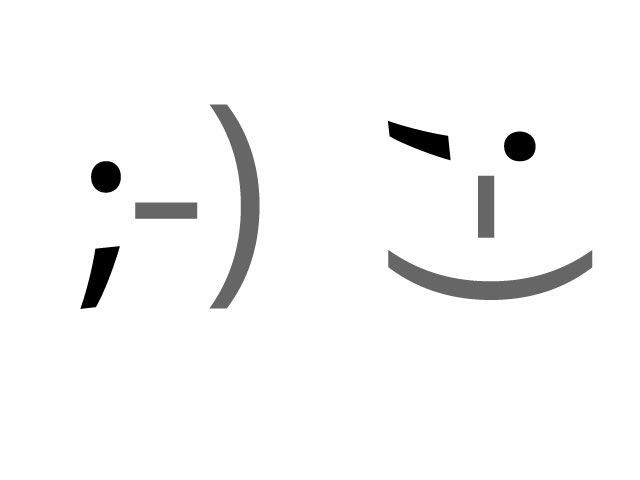How to Use Semicolons
I edit a lot of copy over the course of a week. My company receives articles from a third-party content provider, and I edit the bulk of them to ensure they're up to company standards. By far, my most common edit is semicolon use.
First, let me admit that in my seedy, collegiate youth, I was once an overuser of semicolons. Like many writers at that level, I saw the semicolon as a softer end stop, a two-thirds period. I thought that longer sentences were academic and proof of my writing prowess.
However, now I see them differently. Semicolons are tricky, and they’re only effective in a small set of circumstances. When a friend asks me about how to use semicolons, I usually reply, “Don’t.” Why would a human being want to use a punctuation mark that he doesn’t understand? Then the friend persists—I have annoying, but lovable, friends—and I’m forced to dive into details.
For those looking for the short read, here it is: Just avoid semicolons.
Done.
Hmm. You're continuing to read.
How persistent, annoying, and lovable...
Okay fine. We’ll start with the easiest way to use semicolons: a super list. Semicolons can be very helpful when a comma simply won’t do between items in a list. Take this breakfast order for example:
“I’d like to order a bacon, egg, and cheese, a sausage, egg, and cheese, and an egg white and cheese.”
There's no hierarchy of punctuation in that sentence, so the reader can get lost in the middle. If we replace specific commas with semicolons, it creates separation between the items in the list. The result is much clearer:
“I’d like to order a bacon, egg, and cheese; a sausage, egg, and cheese; and an egg white and cheese.”
Semicolons can also come into play with appositives, items inside commas that describe the noun before them. Here's an example:
“On Tuesday, I saw Dr. Smith, my math teacher, Mr. Davis, my economics professor, Mrs. Tuttleman, my statistics teacher, and Steve, my next-door neighbor.”
The commas and appositives in that example are confusing. Did I see Dr. Smith AND my math teacher AND Mr. Davis AND so on? If I decide that's the case, Steve blows up the convention at the end of the sentence. (“My next-door neighbor” is clearly the appositive of "Steve.") Now, note the clarity that semicolons can bring to the list:
“On Tuesday, I saw Dr. Smith, my math teacher; Mr. Davis, my economics professor; Mrs. Tuttleman, my statistics teacher; and Steve, my next-door neighbor.”
That was simple enough, but let's dig deeper into the semicolon. To get into the right mindset, perhaps it's best to think of punctuation as spice. Exclamation points are hot sauce. Commas are salt. Periods are pepper. Dashes are thyme. Question marks are, um, paprika… Anyway, think of semicolons as saffron. They have the potential to provide a nice punch, but they’re a waste of spice and money if you don’t know how to use them. (In fact, semicolons can ruin your writing because they’re noticeable to any discerning eye.)
When I was in grad school, I worked at the Rowan University Writing Lab. My supervisor was Tom Kloskey, a traditionalist, Shakespearean scholar, and knowledgeable writing instructor. He used this example, which I adopted as soon as he showed me. He started with these independent clauses:
My father collects Playboys,
My mother burns them.
Then he showed the punctuation marks a writer can use between them.
The first option for punctuating the two independent clauses is the end stop, or period. Simple, straightforward, and the gold standard. These independent clauses can exist on their own, so we turn them into sentences:
“My father collects Playboys. My mother burns them.”
The next option is the comma, which needs a conjunction to connect two independent clauses. The acronym "FANBOYS" offers an easy way to remember conjunctions (i.e., For, And, Nor, But, Or, Yet, So). For the two clauses we're using, the three best options are "and," "but," and "so." Each one has its own subtle implications that I won’t get into here.
“My father collects Playboys, and my mother burns them.”
“My father collects Playboys, but my mother burns them.”
“My father collects Playboys, so my mother burns them.”
Last is the semicolon, the main event. A semicolon between two independent clauses denotes that the two clauses are related. Here, the semicolon implies that the two clauses describe actions that happen in tandem. My father collects Playboys; my mother burns them. Action 1; Action 2. The semicolon is more permeable than the end stop. It allows the two independent clauses to mingle. They’re tied together.
“My father collects Playboys; my mother burns them.”
Do you see the subtlety there? The semicolon establishes a connection between the two sentences in a way that other punctuation marks can't. Here are a few more examples for good measure:
“Timothy is shopping for new sneakers; he has a race next week.”
“She is everything to me; she is my universe.”
“It rained all night; Sarah slept peacefully.”
Semicolons cause confusion because their usage is generally difficult. Hence my initial suggestion to avoid them entirely. In general, you can always replace a semicolon with an end stop, and your reader will never know the difference. However, the same cannot be said of the opposite. Semicolons are exotic enough that they are noticeable, so they can’t replace end stops.
A semicolon requires a conscious decision more so than other traditional punctuation marks, and it implies that the writer is making a point in tying two thoughts together with a nice red bow. As such, it’s best to use them sparingly. I treat semicolons the same way I treat exclamation points and air horns. I only use them when they’re required or I want to focus someone's attention.

